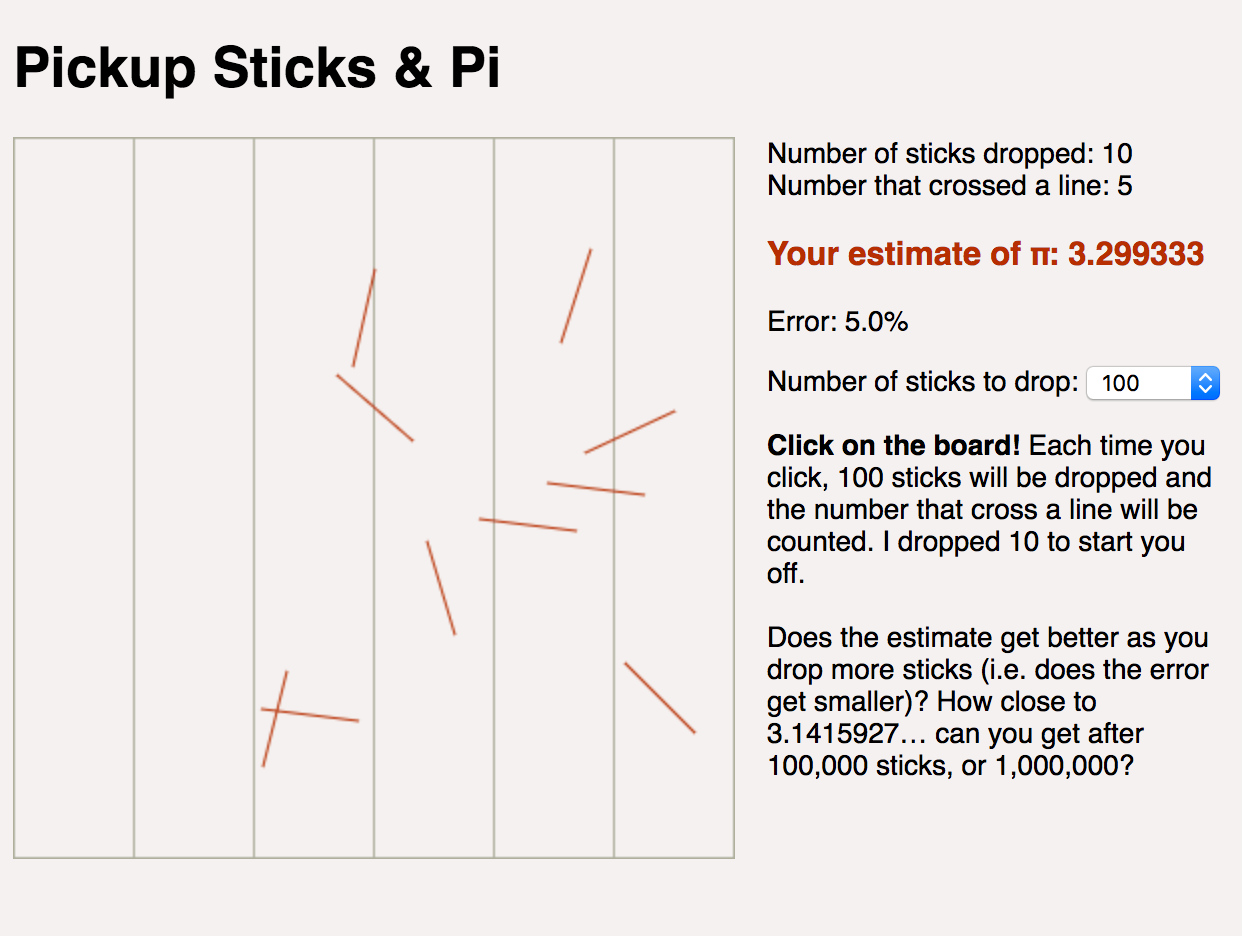Estimate Pi by Dropping Sticks
A simulator based on one of the oldest problems in geometrical probability approximates pi.

Pi Day is just around the corner (March 14, or 3.14), and we here at SciFri came across a fun simulator that estimates the number in a blog post by Tommy Ogden, a Ph.D student in theoretical physics at Durham University in England.
The simulator is based on an experiment called Buffon’s needle, one of the oldest problems in the field of geometrical probability, according to The Mathematica Journal. In the 18th century, French philosopher Georges-Louis Leclerc, Comte de Buffon determined that you can approximate pi by dropping needles on a grid of parallel lines (whose spacing is greater than the length of a needle) and calculating the probability that they will cross a line. The probability is directly related to pi.
Ultimately, you can calculate pi using this formula:
Ready to find pi? Use Ogden’s simulator below, where you can “drop” thousands of sticks and test the formula yourself. How close can you get to pi, with how many sticks? Send us your results by commenting below or tweeting us @scifri with the hashtag #MyPi.
If you want to get truly interactive, print out [attach toothpicks] and drop 2.5-inch toothpicks on it. Let us know how close you get! Please note that an updated version of this worksheet was added at about 6:30 p.m. on March 13, 2014 to reflect a change in the formula.
Bonus: You can even try the experiment using hot dogs!

Chau Tu is an associate editor at Slate Plus. She was formerly Science Friday’s story producer/reporter.